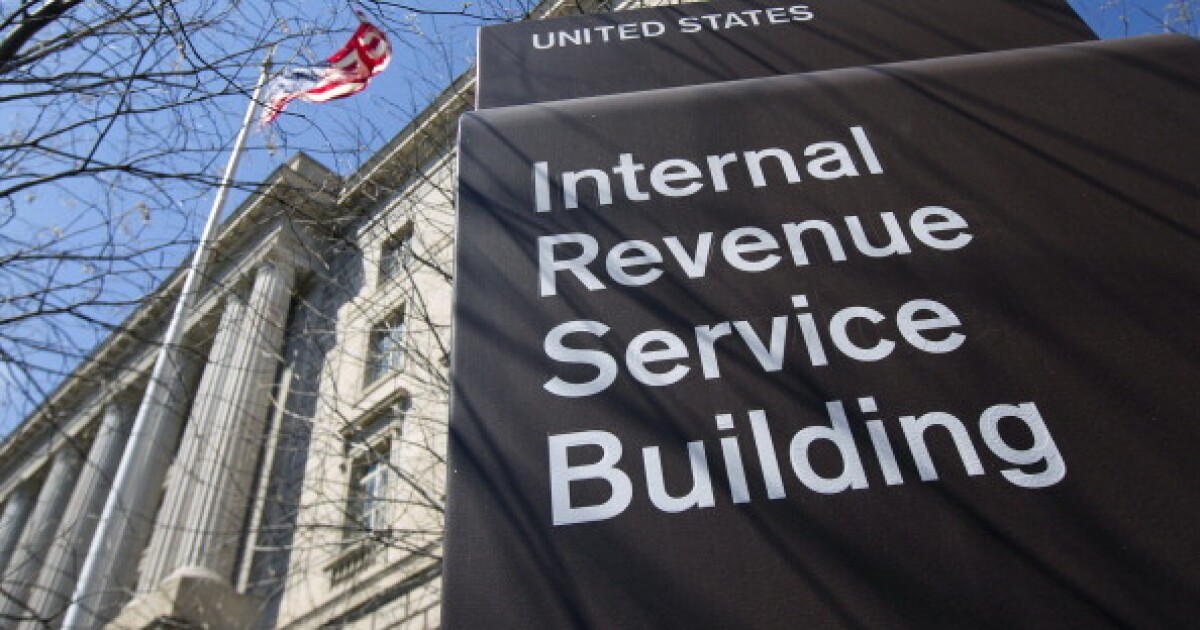Even as it brings stricter enforcement to bear on large corporations, complex partnerships and high-income individuals, the Internal Revenue Service said it’s also been making steady improvements in taxpayer service and technology, including for tax professionals, ahead of the
“We’ve been working hard to ensure the 2024 tax-filing season, which begins on January 29, builds on the accomplishments of last year,” said IRS Commissioner Danny Werfel during a conference call Thursday with reporters. “We know we need to do more. We remain focused on improving service to hardworking taxpayers, offering them more in-person and online resources as part of our efforts to deliver another successful tax season this year. This filing season, taxpayers and tax professionals will see additional improvements in our operations and service that will make it easier for them to prepare and file taxes.”
To support both stronger enforcement and better service, the service has been making use of the billions in extra funding provided under the Inflation Reduction Act, although
(For more on IRS progress on enforcement efforts against large corporations, complex partnerships, and high-income taxpayers, see
“As our initiatives to improve compliance among high-income individuals, complex partnerships and large corporations ramp up, the IRS is continuing its work to improve customer service and modernize core technology infrastructure,” said Laurel Blatchford, the Treasury Department’s chief implementation officer for the Inflation Reduction Act, during the same press conference. “Treasury and the IRS are focused on achieving near-term service improvements and longer-term modernization and continue to expand Taxpayer Assistance Center operations.”
Currently, the IRS has opened or reopened 54 in-person Taxpayer Assistance Centers since the passage of the Inflation Reduction Act, including four since November in Bellingham, Washington; Eau Claire, Wisconsin; Washington, Pennsylvania; and Media, Pennsylvania.
“For the 2024 tax-filing season, our goal is for all of our TACs to collectively offer 8,000 more hours of in person assistance than they did last filing season,” said Werfel. “To get us there, we have increased staffing. As of the end of December, we brought on 858 new TAC employees, a net increase of 410 compared to fiscal year 2022, and we will continue hiring to replace departing staff. These employees, available under Inflation Reduction Act funding, are helping more and more taxpayers across the country.”

Bloomberg via Getty Images
Technology improvements
Werfel pointed out that the IRS is also using the extra funding from the Inflation Reduction Act to enhance online assistance as well as in-person help.
“Taxpayers deserve the same functionality in their online accounts that they experience with a bank or other financial institution,” he said. “We’re making progress toward our five-year goal of giving taxpayers the ability to securely file all documents and respond to all notices online and securely access and download their data and account history.”
The IRS made several updates to the Individual Online Accounts that taxpayers can access. “Taxpayers can now save multiple bank accounts, validate bank account information and display their bank name,” said Werfel. “They can also schedule and cancel payments and expand and revise payment plans.”
The service has also improved its recently introduced Business Tax Accounts as well as Tax Pro Accounts.
“We launched the second phase of the Business Tax Accounts that expands its online capabilities, as well as the types of entities that are eligible to use this tool, and we’ve made several enhancements to the Tax Professional Account,” said Werfel. “For example, we’ve given tax pros the ability to view their individual and business clients’ tax information, including business balances due, and canceled and return checks for individuals.”
The IRS is also seeing increased usage of its Document Upload Tool, which enables taxpayers to respond to IRS notices online and avoid paper correspondence when they don’t have a filing or payment requirement. “Throughout 2023, we added different types of notices and letters to the Document Upload Tool that can be used,” said Werfel. “As of December, we have received more than 45,000 responses to notices via this tool.”
During filing season 2023, taxpayers could respond to 10 of the most common notices for credits like the Earned Income and Health Insurance Tax Credits online. By last July, taxpayers had the option to respond to 61 IRS notices and letters, and by October 2023, taxpayers could respond to all notices and letters that do not have a filing or payment action.
The IRS has also enhanced two other widely used online tools,
“The tools are now equipped with natural voice language voice bots, so that callers can speak their questions instead of following menu-driven prompts,” said Werfel. “And we have something new for taxpayers trying to find out how long it’s taking us to process various returns and forms. IRS.gov now has a
The IRS has also been using the Inflation Reduction Act funds to add new scanning and mail-sorting equipment. “Modernizing our operations is the key to meeting many of our transformation goals and we’re making progress here as well,” said Werfel. “IRA funding has helped us replace old out-of-date scanning equipment and mail-sorting machines. That has greatly streamlined the process of opening, sorting and scanning mail. We also continue improving our ability to digitalize paper returns and forms. During calendar year 2023, the IRS scanned more than 1.5 million pages. That includes more than 484,000 Forms 940, more than 907,000 Forms 941 and more than 111,000 Forms 1040. It’s exciting to see how far we’ve come over the past few months in this area, and I look forward to seeing this progress continue.”
Avoiding funding cuts
The IRS hopes to preserve its funding, despite the possibility of budget cuts by Congress this year or after the elections in November.
“It’s clear Inflation Reduction Act funding is making a difference for taxpayers, and we will build on these improvements in the months ahead,” said Werfel. “I will just remind everyone that for this progress to continue, we must maintain a reliable, consistent annual appropriation for our agency, as well as keeping Inflation Reduction Act funding intact. With adequate resources, we will be able to continue transforming the agency during 2024, and in the years to come.”
Last weekend, House Speaker Mike Johnson, R-Louisiana, and Senate Majority Leader Chuck Schumer, D-New York, agreed to
The service hopes to avoid the funding cuts that Congress seems to be threatening on a constant basis.
“The IRS needs to constantly balance the day-to-day of running the tax system with instituting longer-term improvements to service and technology that are going to pay dividends for taxpayers decades down the road,” said Blatchford. “This is why ensuring a sufficient annual budget for the IRS is so critical. Achieving the long-term goals of the Inflation Reduction Act resources depends on robust yearly budgets to fund basic operations like answering taxpayer phone calls. While the framework announced last weekend does not impact near-term plans for Inflation Reduction Act investments, an annual appropriations bill that allows the IRS to fund its day-to-day operations is essential. Delivering the service to American taxpayers this year and delivering the service American taxpayers deserve 10 years from now requires annual long-term funding working in concert. The bottom line is that Inflation Reduction Act resources are working. Services have significantly improved. New high-end enforcement initiatives are bringing in revenue and technologies are being upgraded with new tools and features being rolled out. The IRS was underfunded for decades, so much work remains to realize the full potential of these resources, but what we’ve been able to achieve in the last 18 months shows how the IRA is paying off for taxpayers and the country.”
Werfel was asked by reporters about the possibility of those budget cuts.
“The impact of the rescission that’s being discussed as part of the current budget deal will not impact our efforts until the later years,” he responded. “If we end up with $60 billion in modernization funding rather than $80 billion, we have the ability to still spend that $60 billion over the next 10 years, and our intent is to spend the money to have maximum impact in helping taxpayers in the areas that we’ve describing, to spend the money to have maximum impact now and in the immediate future, on allowing taxpayers have better access either in person, on the phone or on the web, to use that money to continue the tremendous momentum we’re having in finding areas where wealthy taxpayers are shielding their income and collecting from them what is owed, and a whole variety of other areas. The concern about the budget would be in the later years. My hope is that as we demonstrate the positive impact that IRA funding is having for all taxpayers, that there will be a need and a desire amongst policymakers at that time to restore IRS funding so that we can continue to maintain the momentum that’s having a very positive impact, not only on taxpayers having an easier time navigating the complex tax laws, but ensuring there’s equity in our compliance with our tax laws.”
Government shutdown
In case a budget deal can’t be reached and there is a government shutdown, the IRS is prepared, although it could disrupt some operations during tax season. Werfel was asked about the impact of that as well.
“Shutdowns are highly disruptive,” he responded. “And although we have the ability, under the law, to carve out certain activities, and preserve them as ongoing operations during a shutdown, and maintaining the filing season, we’ll have a variety of different carveout elements that will allow us to maintain operations, it will increase the risk that we don’t have as smooth a filing season as we intend to have. We have experienced shutdowns before. We have not experienced a shutdown in the middle of filing season, so there’s some uncertainty there. Of course, we will do everything in our power to minimize the disruptions that a shutdown would have on filing season. But as many of us have experienced who have been through government shutdowns before, and as you’ve seen, if you’re outside the government looking in, they can be very disruptive and very chaotic, and so I worry about the risks that the shutdown presents on all IRS operations.”
Tax extenders
Congress has also been
Werfel was asked about how the IRS would handle such changes with tax season about to start.
“In terms of tax packages that occur late in the year for us, which means right before filing season starts or right after, the IRS is no stranger to these types of late-breaking changes to the code that impact either the imminent filing season or the filing season that we’re in,” he responded. “As we’ve done in previous years, we’ll review the legislation, roll up sleeves and get the job done. It’s hard for me to fully comment until we see the details of any tax package, but just based on precedent and prior years, the IRS has shown a resiliency and an ability to quickly turn around these types of packages.”




